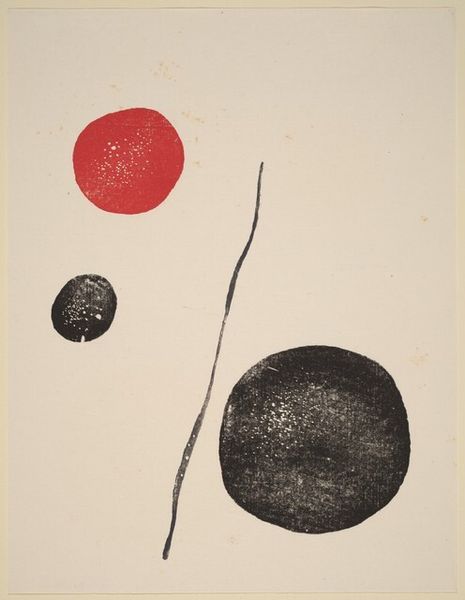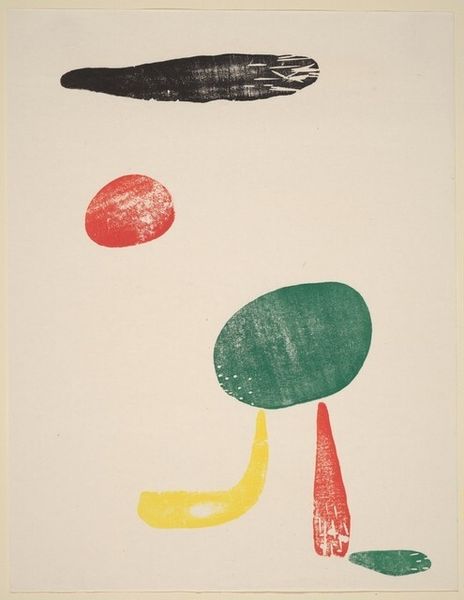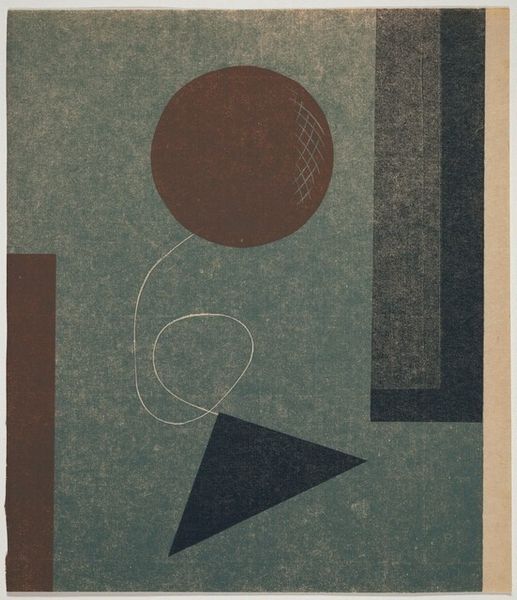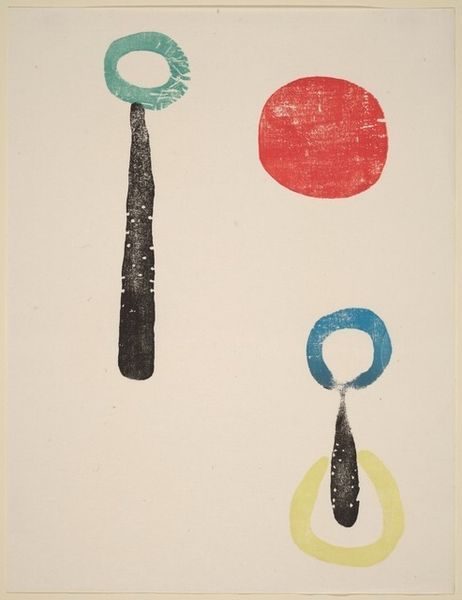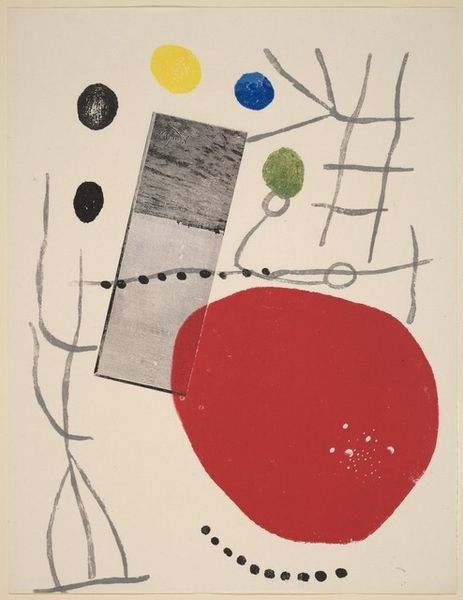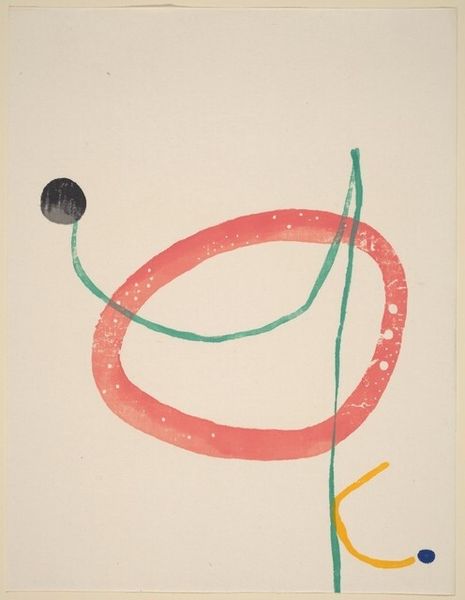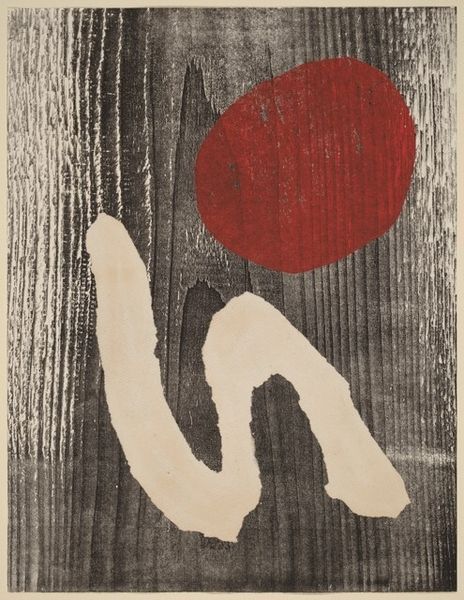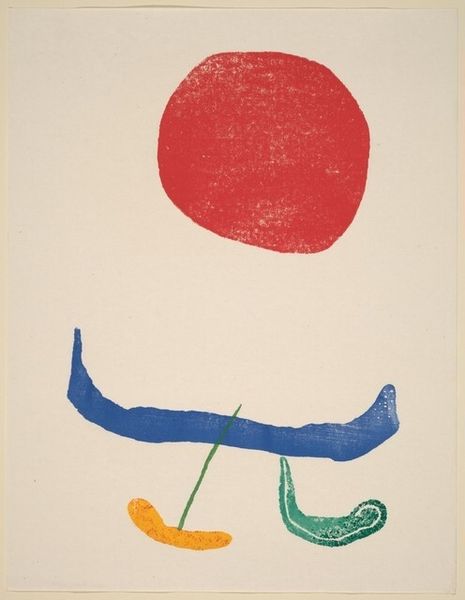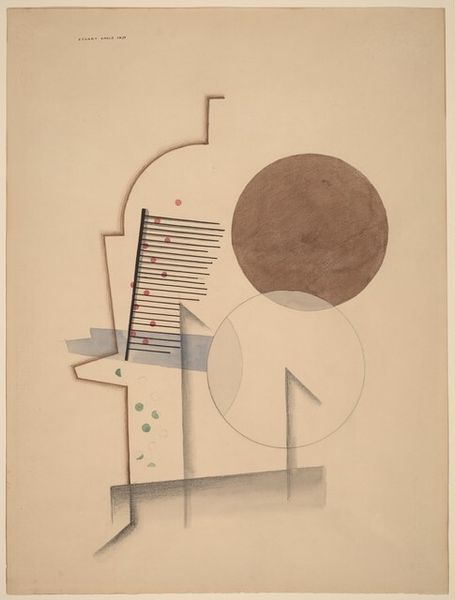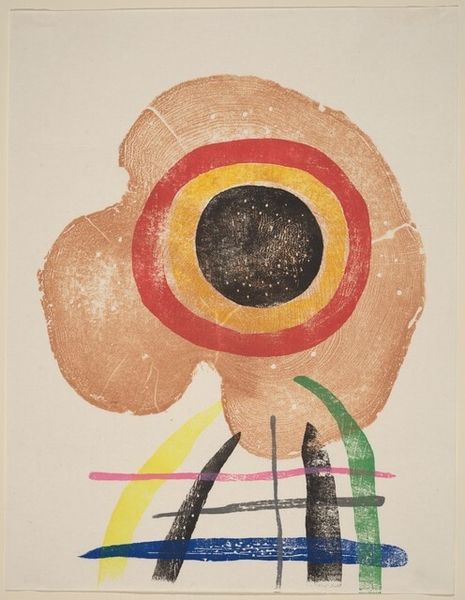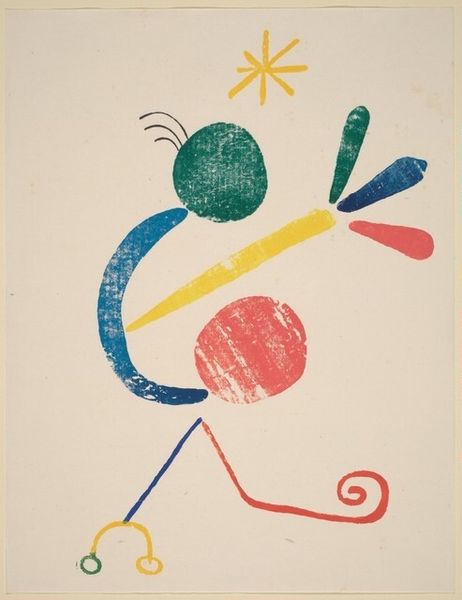![Untitled [plate XXVIII] by Joan Miró](/_next/image?url=https%3A%2F%2Fd2w8kbdekdi1gv.cloudfront.net%2FeyJidWNrZXQiOiAiYXJ0ZXJhLWltYWdlcy1idWNrZXQiLCAia2V5IjogImFydHdvcmtzL2Y5NmM5ODBkLTJhMzgtNGJlNS1hZTZmLTVjNmZjYjAzMzc2NC9mOTZjOTgwZC0yYTM4LTRiZTUtYWU2Zi01YzZmY2IwMzM3NjRfZnVsbC5qcGciLCAiZWRpdHMiOiB7InJlc2l6ZSI6IHsid2lkdGgiOiAxOTIwLCAiaGVpZ2h0IjogMTkyMCwgImZpdCI6ICJpbnNpZGUifX19&w=1080&q=75)
# print
#
geometric
#
abstraction
#
line
#
surrealism
#
modernism
Dimensions: sheet: 32.7 × 25.24 cm (12 7/8 × 9 15/16 in.)
Copyright: National Gallery of Art: CC0 1.0
Curator: Welcome. Today, we are observing “Untitled [plate XXVIII]”, a print created in 1958 by Joan Miró. Editor: It strikes me as playful and sparse—almost like a child’s drawing, yet holding a sophisticated tension. Curator: The composition is remarkably simple. We have a strong, singular black line dominating the left side, balanced by a larger, irregular red form and a smaller black circular shape to the right. The print medium itself is integral; the textures and slightly mottled colors are integral to the artwork. Editor: I see it as a distillation of Miró's artistic concerns: the reduction of form to essential symbols and primal shapes. Given the era—post-war anxieties and the rise of abstract expressionism—does this apparent simplicity challenge ideas about what art could represent, or maybe protest against it? Curator: Absolutely, but it’s a deliberate move away from representation towards pure form and emotion. The strong line might act as a horizon. And that red blob resembles a sun. Editor: Or perhaps blood, given the historical context? Miro’s work often subtly addresses political turmoil, even in its abstracted state. While others embrace pure form, he can be interpreted to use surrealist iconography as quiet resistance. It allows universal audiences and also protects the artist. Curator: Interesting. And Miró’s consistent employment of such simplified, seemingly random shapes makes one consider the role of chance. Perhaps each print in the series allows the ink’s imperfections, the press’s idiosyncrasies to shape each final image. Editor: I find the stark contrast—the thin linear graphic with those dense areas of color—unsettling. Perhaps the work is more unsettling when interpreted in the years after World War 2. In the face of widespread atrocities, did his work reflect despair or attempt to rebuild using pure shapes? Curator: A dialectic between order and chaos, perhaps? Ultimately, viewers must make their own decisions on the intent and affect of these artistic choices. Editor: Indeed. These forms evoke a personal emotional connection. Ultimately, that interplay—intention, context, and viewer reception—adds to art history's appeal.
Comments
No comments
Be the first to comment and join the conversation on the ultimate creative platform.
